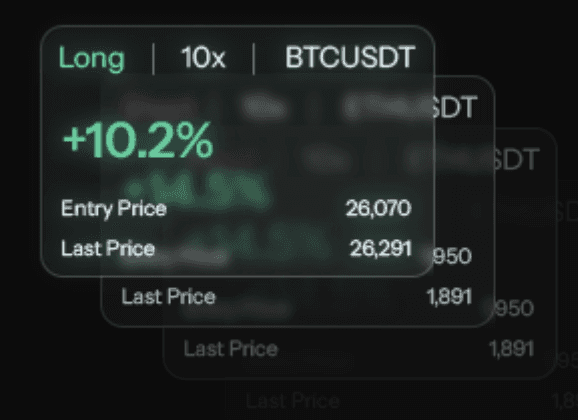Market Cycles: Identification and Use
Sep 14, 2023
Whatever goes up must come down. Cycles occur almost everywhere but most prominently in trading. In this blog post, we'll take a closer look at identifying crucial moments in the cycles so that you can get an edge on market timing.
Structure of Cycles
Below you can see cycles that occurred during a span of few days. Notice how the duration of each cycle is almost the same. This is just a simple view of how cycles look like at a very low level.

For accuracy and reliability, we mainly measure cycle lengths from trough to trough. You will easily find cycles in long term charts. But the art is to keep shortening the time frame while
Qualities of a Cycle:
Amplitude - Measures the height of the wave and is expressed in price (dollars, cents).
Period - Time between troughs.
Phase - Measure of the time location of a wave trough.
Principles of Cycles
Summation - Holds that all price movement is the simple addition of all active cycles.
Harmonicity - Neighbouring waves are typically related by a small number. For example, 20 day cycle → 10 day next cycle.
Synchronicity - Strong tendency for waves of differing lengths to bottom at about the same time. Similar cycle lengths of different markets will tend to turn simultaneously.
Proportionality - Describes the relationship between cycle period and amplitude. For instance, cycles with longer periods (length of cycle) should have proportionally wider amplitudes.
Classification of Cycles:
Classification is often based on how long the cycles are.
Long term cycles - Two or more years in length
Seasonal cycle - One year
Primary / Intermediate cycle - Nine to twenty-six weeks
Trading cycle - Four weeks
Alpha & beta - Approximately 2 weeks each
Conclusion
Market cycles in cryptocurrency trading can be a bit more hectic than stocks. But the overall idea and fundamentals are the same. We should keep in mind that the trend of each cycle is determined by the direction of its next longer cycle. Knowing the timing of cycles allow you to have better chances in finding the right entry and exit points.

Market Cycles: Identification and Use
Sep 14, 2023
Whatever goes up must come down. Cycles occur almost everywhere but most prominently in trading. In this blog post, we'll take a closer look at identifying crucial moments in the cycles so that you can get an edge on market timing.
Structure of Cycles
Below you can see cycles that occurred during a span of few days. Notice how the duration of each cycle is almost the same. This is just a simple view of how cycles look like at a very low level.

For accuracy and reliability, we mainly measure cycle lengths from trough to trough. You will easily find cycles in long term charts. But the art is to keep shortening the time frame while
Qualities of a Cycle:
Amplitude - Measures the height of the wave and is expressed in price (dollars, cents).
Period - Time between troughs.
Phase - Measure of the time location of a wave trough.
Principles of Cycles
Summation - Holds that all price movement is the simple addition of all active cycles.
Harmonicity - Neighbouring waves are typically related by a small number. For example, 20 day cycle → 10 day next cycle.
Synchronicity - Strong tendency for waves of differing lengths to bottom at about the same time. Similar cycle lengths of different markets will tend to turn simultaneously.
Proportionality - Describes the relationship between cycle period and amplitude. For instance, cycles with longer periods (length of cycle) should have proportionally wider amplitudes.
Classification of Cycles:
Classification is often based on how long the cycles are.
Long term cycles - Two or more years in length
Seasonal cycle - One year
Primary / Intermediate cycle - Nine to twenty-six weeks
Trading cycle - Four weeks
Alpha & beta - Approximately 2 weeks each
Conclusion
Market cycles in cryptocurrency trading can be a bit more hectic than stocks. But the overall idea and fundamentals are the same. We should keep in mind that the trend of each cycle is determined by the direction of its next longer cycle. Knowing the timing of cycles allow you to have better chances in finding the right entry and exit points.

Market Cycles: Identification and Use
Sep 14, 2023
Whatever goes up must come down. Cycles occur almost everywhere but most prominently in trading. In this blog post, we'll take a closer look at identifying crucial moments in the cycles so that you can get an edge on market timing.
Structure of Cycles
Below you can see cycles that occurred during a span of few days. Notice how the duration of each cycle is almost the same. This is just a simple view of how cycles look like at a very low level.

For accuracy and reliability, we mainly measure cycle lengths from trough to trough. You will easily find cycles in long term charts. But the art is to keep shortening the time frame while
Qualities of a Cycle:
Amplitude - Measures the height of the wave and is expressed in price (dollars, cents).
Period - Time between troughs.
Phase - Measure of the time location of a wave trough.
Principles of Cycles
Summation - Holds that all price movement is the simple addition of all active cycles.
Harmonicity - Neighbouring waves are typically related by a small number. For example, 20 day cycle → 10 day next cycle.
Synchronicity - Strong tendency for waves of differing lengths to bottom at about the same time. Similar cycle lengths of different markets will tend to turn simultaneously.
Proportionality - Describes the relationship between cycle period and amplitude. For instance, cycles with longer periods (length of cycle) should have proportionally wider amplitudes.
Classification of Cycles:
Classification is often based on how long the cycles are.
Long term cycles - Two or more years in length
Seasonal cycle - One year
Primary / Intermediate cycle - Nine to twenty-six weeks
Trading cycle - Four weeks
Alpha & beta - Approximately 2 weeks each
Conclusion
Market cycles in cryptocurrency trading can be a bit more hectic than stocks. But the overall idea and fundamentals are the same. We should keep in mind that the trend of each cycle is determined by the direction of its next longer cycle. Knowing the timing of cycles allow you to have better chances in finding the right entry and exit points.

Supercharge your trading game with Market Mapper today!




